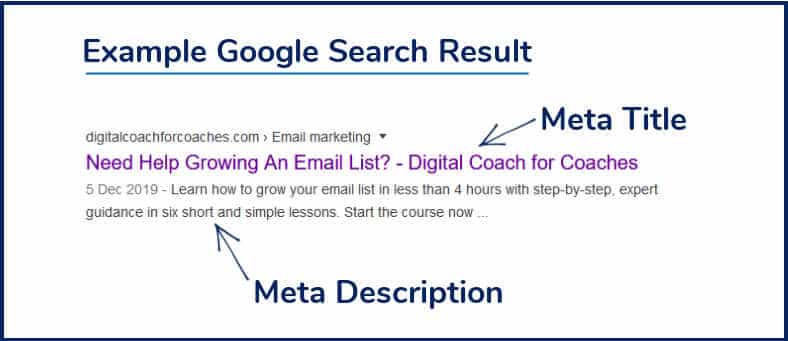
Are you looking for ways to increase traffic to your website? One way to do this is by leveraging the power of long tail keywords in your content marketing strategy.
In this article, we’ll discuss what long tail keywords are and how you can use them to increase search engine traffic to your website.
What are Long Tail Keywords?
Long tail keywords are search terms (phrases) that people enter into a search bar or box to find out information about a subject.
They typically consist of three or more words, for example “best digital marketing coaching service in Warrington”.
A long tail keyword is generally more descriptive and specific than the standard one or two word search queries, which in this example could be “digital marketing”
Why are Long Tail Keywords Important?
Search Engine Optimisation (SEO) is the process of optimising web content to make it visible and rank higher in search engine results pages. Simply put, you create content containing relevant keywords, appropriate meta data and best practice to deliver an excellent user experience.
When you find long tail keywords and use these in your SEO strategy, your chances of your business website organically ranking in search results are significantly improved, ultimately increasing traffic to your website.
The traffic generated from organic search this way is usually highly targeted, with an increased chance of conversion due to the specificity of the search query.
What Makes a Good Long Tail Keyword?
Long tail keywords tend to:
- have a lower search volume compared with an overall umbrella short tail keywords
- be more precise in terms of its search intent
- have lower competition meaning it is easier to rank for
The higher the relevance of the long tail keyword, the greater the potential gains in website traffic.
For example, the general search term “digital marketing” has a high search volume, is highly competitive with over 2.5B pages vying for the #1 slot on Google, yet, it’s such a broad keyword, the chances are the results displayed will not contain enough relevant or specific information to match user intent.

Whereas, a query like “digital marketing funnel stages” not only has a reasonable search volume, but also significantly fewer competing pages, and the results returned should be highly relevant to searcher.

Researching and Selecting Long Tail Keywords
The Keyword Research Process
Keyword Research Tools
There are numerous keyword research tools available which can help with the long tail keyword research process, some are completely free and others have basic and premium paid plans.
Here a few of my favourites:
Crafting Unique Headlines That Incorporate Long Tail Keywords
Headlines are an essential part of any blog post or web page as they directly affect whether readers click through to read the article or not.
Think about what makes you read a newspaper article, or click on a link in search results or shared in social media.
Headlines that incorporate long tail keywords stand a better chance at being successful as they provide more insight into what someone can expect from reading more.
Additionally, when combined with quality written content that follows SEO best practices, visitors will stay on your website longer which is another important ranking factor.
Structuring Content with Long Tail Keywords
When creating content, it is important to structure it with your long tail keyword phrases in mind. This will help you to target a more precise audience and potentially have multiple top ranking pages.
Include them multiple times – in your headings and throughout the body text, but take care not to overdo it. This is known as keyword stuffing and is considered to be an unethical SEO tactic that can have negative effects such as getting the website penalized or even blacklisted from appearing in SERPs (Search Engine Results Pages ) at all.
Remember though, only one page or post on your website should target a specific keyword, otherwise, how will the Search Engines know which one you want to rank? You can however use variations to complement your main keyword choice.
By using a good content marketing structure, you help search engines understand what your page or post is about and provides the best opportunity for you to rank on relevant terms.
What Constitutes High Quality Content?
High-quality content on your business website is content that is informative, well-researched, organised, and relevant to your target audience. Make sure you include long tail keywords and phrases that are in line with the overall message of the page or post.
Using compelling copy is one of the best ways to grab your customer’s attention and convince them that your product or service is worth their time.
When writing content it’s essential to focus on the benefits of what you offer, rather than just listing the features. This will help potential customers understand why your product or service is superior to others on the market.
When highlighting benefits, it’s important to use specific language and quantify wherever possible.
For example, instead of saying “our product will save you time”, say something like “our product saves an average of 2 hours per week”. This gives a stronger impression and makes customers feel as though they truly can see a return on their investment.
Finally, be sure to include customer testimonials whenever possible as this can give potential customers confidence that your product or service does what you claim it does. Customer reviews also provide social proof for your company which could mean more sales in the future.
Optimising Content with Proper Tags and Metadata for Improved Search Results
One of the most important aspects of optimising content is to ensure that it is properly tagged and indexed.
Tags and metadata help search engines like Google understand the content on your website. It also helps them display relevant results when users are searching for specific topics related to your business.
When tagging content, make sure you include your long tail keywords and phrases in the meta title, meta description, meta keywords, category and tags fields. This will help search engines understand what your blog post or article is about and what topic(s) it covers. Additionally, make sure the words accurately describe your content as this will make it easier for search engines to find it.

Another way to improve your search engine rankings is to use synonyms in your tags and descriptions.
For example, if you have an article about “vegan recipes” you may want to add tags like “plant-based diet” or “vegetarian meals” in addition to the main keyword phrase. This will help increase the visibility of your article when users perform related searches.
Using a website seo tool like Yoast or Rank Math can help with this process.
Monitor Performance and Adjust as Needed
Once you have implemented your long tail keyword content marketing strategy, you need to consistently monitor its performance. This will help you identify which tactics are working and which ones need to be adjusted or replaced.
This can be done through a variety of analytics tools such as Google Analytics (GA4), Google Search Console, individual social media platform insights and other paid for tools such as Surfer SEO and Ubersuggest.
For example, you can track:
- the number of visitors to your website
- the engagement rates on each post
- the number of conversions generated from each piece of content.
Another way to measure performance is through A/B testing.
A/B testing involves creating two versions of a page or post with slight variations in order to determine which version performs best. By looking at the results of these tests, you can make informed decisions about which elements should be included in future content strategies.
Ultimately, monitoring performance metrics will give you an accurate picture of how successful your content strategy has been so that you can make necessary adjustments if needed.
In Summary
Keyword research and the use of long tail keywords should be an essential part of a business’s content marketing strategy.
I like to refer to keywords as your “profitable marketing words‘. By taking the time to find the right words; i.e. the words your ideal clients actually use to search for solutions to their problems, you can reach a wider audience and maximize your search engine visibility.
Getting your marketing messages infront of the right people this way should produce a higher volume of enquries, leads and ultimately sales.
If you have enjoyed this article on using long tail keywords can help boost traffic to your website or blog, join my free newsletter for more more tips on creating amazing content that will help you grow your business. Please subscribe below. Alternatively, if you need help with your keyword research, get in touch.








Leave A Comment